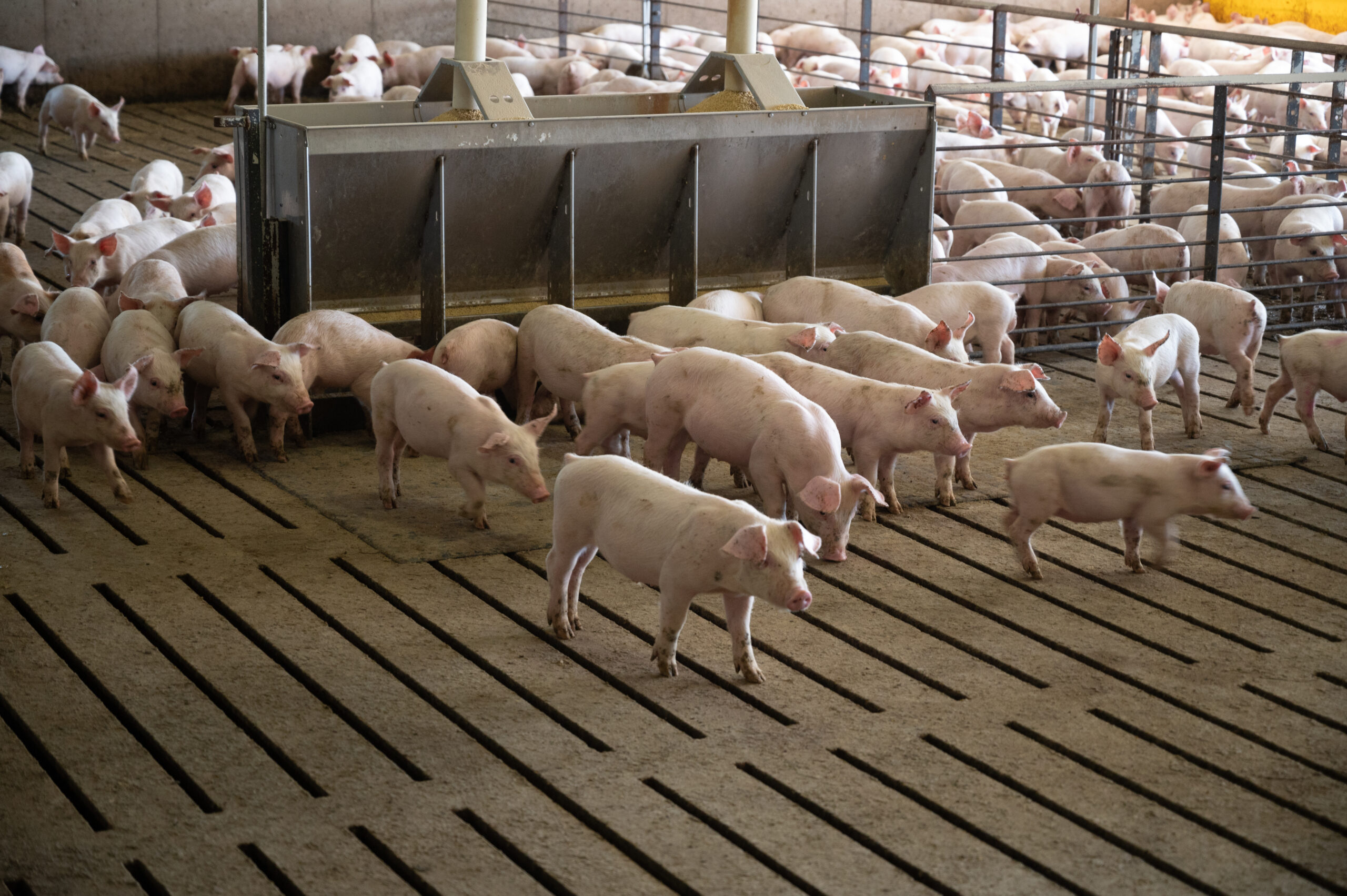A total of 408 weaned pigs (19 d of age; 6.59 kg initial BW) were used in a 3-phase feeding program to evaluate effects of increasing levels of crystalline L- Lysine on performance of nursery pigs. Pigs were blocked by weaning BW and allotted to 44 pens which were assigned to one of 4 dietary treatments (9-10 pigs/pen; 11 pens/treatment), including the control diet supplemented with one of the four L-Lysine levels: 0.3% (L1), 0.5% (L2), 0.6% (L3), or 0.7% (L4). Diets were formulated to be isocaloric and contained 1.40, 1.32, and 1.25% Sid Lys for phase 1, 2, and 3, respectively. L-Val, L-His and L-Arg were included in the L2, L3, and L4 treatments in addition to DL-Met, L-Thr, L-Trp, and L-Ile which were offered in all diets. In Phase 1 (d 0-9), no effects of L-Lys levels on performance were observed (P > 0.10). In Phase 2 (d 9-21), increasing L-Lys from L2 to L4 Lys reduced ADG (Linear, P < 0.001), while L4 also reduced ADFI (Linear, P = 0.01) and feed efficiency (Linear, P < 0.001). In Phase 3 (d 21-42), L3 and L4 significantly improved feed efficiency (Linear, P = 0.001). Overall (d 0-42), feeding L-Lys at L4 tended to reduce ADG (Linear, P < 0.10) and ADFI (Linear, P < 0.10), while feeding L-Lys at L3 improved feed efficiency (Cubic, P < 0.05).
Data of this study suggest that responses to high levels of L-Lys are more profound on feed efficiency during phase 2 and 3. Inclusion level of L-Lys at 0.3% is best for gain but 0.6% is the best for optimal feed efficiency. Increasing L-Lys level to 0.7% enhanced feed efficiency in phase 3, but reduced all performance measures in Ph1, 2, and overall.
Huyen Tran, H., A. Mercado, T. Weeden, B. de Rodas and K. Haydon. 2022. Effects of Feeding High Level of Crystalline L-Lysine on Performance of Nursery Pigs. 2022 American Society of Animal Science Midwest Section Meeting, Abstract PSVII-14.
